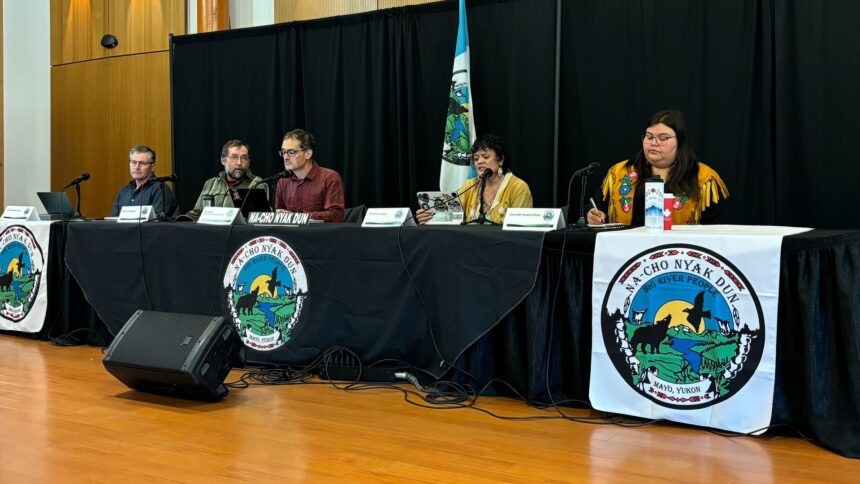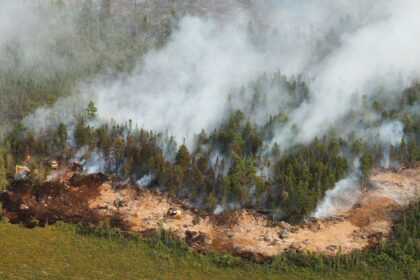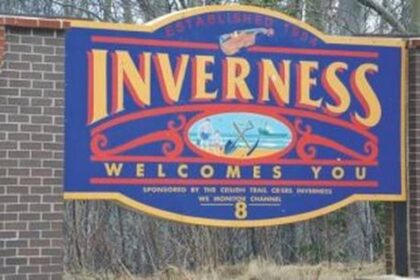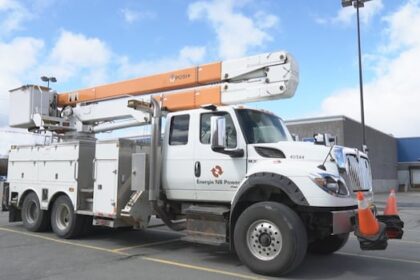The First Nation at the heart of the Eagle gold mine disaster and a Yukon-based conservation group say an independent review board’s recent report on the causes behind the incident has shed some new light on the situation at a surface level – but that a public inquiry is needed to fully address the scope of what went wrong. “(The report’s findings) supports everything that we’ve been saying,” Chief Dawna Hope of the First Nation of Na-Cho Nyäk Dun told APTN News. “And it makes it clear that, more than ever, the disaster cries out for a public inquiry,” she said, repeating information presented in a press release. The report gives a closer look at the heap leach failure that occurred at the gold mine formerly owned by Victoria Gold Corp., on June 24, 2024, near the community of Mayo. Heap leaching is a process that uses cyanide to dissolve gold from huge heaps of crushed ore. The report determined the failure was triggered by a steep section of slope at the heap leach facility and poor drainage, in combination with other “geomechanical causes.” It also found Victoria Gold Corp., and its third-party contractors “directly or indirectly” contributed to the failure by their “actions or inactions.” The failure caused around 11 million tonnes of cyanide-treated ore to slide, 1.7 million tonnes of which was released into the surrounding environment, contaminating groundwater and a nearby creek. Hope, whose First Nation’s traditional territory has been impacted, said the report’s findings reiterates Na-Cho Nyäk Dun’s view that Victoria Gold was “reckless” in its operation of the mine from the start. The First Nation has called for the territory to hold a public inquiry into the matter for the last several months, but Hope said its request has fallen on deaf ears. She said while the report focused more on the technical causations of the failure, a public inquiry could better delve into the matter, including the Yukon government’s role as regulator and Victoria Gold’s track record. She also said the inquiry’s findings could be used to update the territory’s antiquated mining legislation. “It’s frustrating, of course, because things – I feel – could have been in play already, and we could have been halfway to the answer potentially. And things could potentially be a lot better out at the site,” she said. “We just feel that (the report) doesn’t go down into the cause to make sure that it doesn’t happen again.” Public inquiry could find root causes of disaster, says CPAWS Yukon Randi Newton of the Canadian Parks and Wilderness Society’s Yukon branch (CPAWS). Photo: Sara Connors/APTN Randi Newton, conservation manager for the Canadian Parks and Wilderness Society’s Yukon chapter (CPAWS), said the report’s findings provide more insight into Victoria Gold’s operation of the site, something the organization believes wasn’t being done with the appropriate level of care. Newton noted the findings show that a portion of the facility’s ore stacked in 2020 wasn’t irrigated with cyanide solution until the spring of 2024. The company’s irrigation of weak, low-permeability ore lead to the material collapsing, indicating the heap wasn’t being properly managed. Like Hope, Newton feels a public inquiry would be a good next step. “The board has done a very thorough job in answering the question they were tasked to answer, of how did the heap leach fail?” she said. “I would say what’s needed is a broader public inquiry, in addition to this really important report, that can look at why the heap leach failed, not just the mechanics of how.” She said a public inquiry could also examine Victoria Gold’s response to the failure, as well as the issue of responsible mining in the territory. “Many mines in the territory have failed and left a very expensive mess, but they’ve all failed for different reasons,” she said. “If mining is to be done responsibly in the future and in service of northern security and prosperity, then we need to break this cycle and get to the root causes of why, not just the heap leach (failing), but why we’ve seen this in the past as well, and so we can shape all mines in a positive direction.” Mines, Mines and Resources Minister John Streicker said in a statement on July 2 that the government would look into the possibility of holding a public inquiry. “From the outset, we have said that we needed this report before making any decisions about a potential public inquiry. Now that we have the information, we will review it thoroughly and determine the appropriate next steps,” he said. Continue Reading
First Nation in Yukon continues to call on territory for public inquiry into gold mine failure

Leave a Comment










